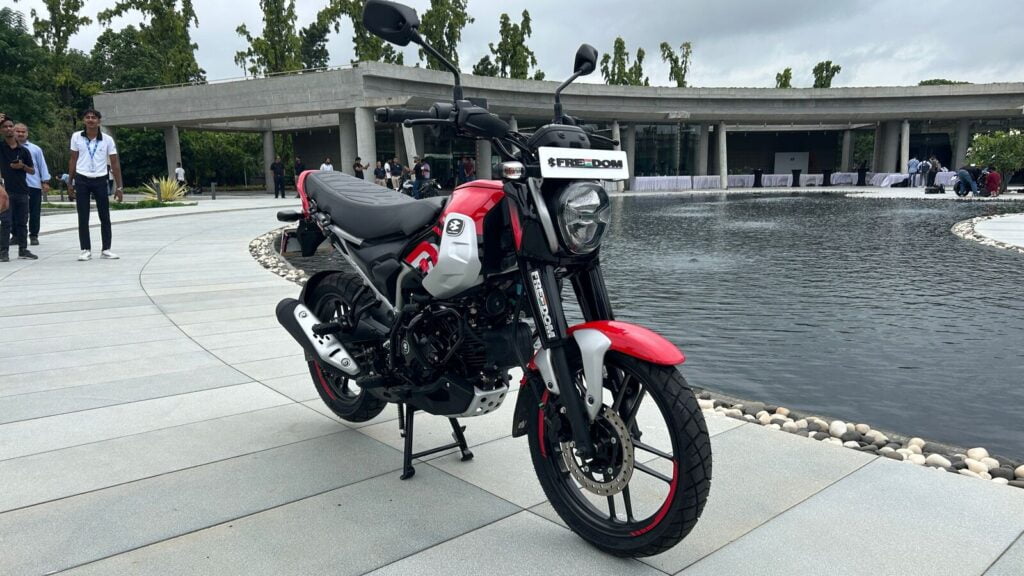Bajaj Freedom CNG Bike: Debunking Common Misconceptions
Bajaj Auto has made headlines with the official launch of the Bajaj Freedom CNG bike in the Indian market, marking it as the world’s first dual-fuel two-wheeler capable of running on both petrol and Compressed Natural Gas (CNG). While CNG technology has been well-established in cars for over a decade, there are still widespread misconceptions surrounding its use in vehicles. Let’s address and debunk some of the most prevalent myths about CNG-powered automobiles.
Bajaj Freedom Bike Launch: Clarifying 5 Misconceptions About CNG
Are CNG vehicles safe?
One of the most common concerns about CNG vehicles is safety. There’s a widespread fear that installing a CNG cylinder could increase the risk of a dangerous explosion. However, when installed by authorized dealerships or manufacturers, CNG kits undergo rigorous testing and approval processes. These kits are designed to operate safely under various temperature conditions. Routine inspections, typically required every few years, ensure the continued safety and reliability of CNG-equipped vehicles.

Does CNG have a bad smell?
Another misconception revolves around the odor of CNG. Natural gas itself is odorless and colorless. However, for safety reasons, a distinct odorant is added to CNG to make it detectable in case of a leak. This odor is not present during normal operation and is only noticeable in the event of a leak, serving as a precautionary measure rather than a persistent issue.
Can CNG impact engine performance?
Historically, fitting a CNG kit was believed to compromise the performance of a vehicle. Today, advancements in technology have significantly minimized this impact. While there might be a slight difference in driving or riding experience when using CNG compared to petrol, particularly in terms of power delivery, the difference is negligible during everyday use. Modern CNG engines are designed to maintain performance levels similar to their petrol counterparts.
Does a CNG cylinder reduce boot space?
In the context of cars, installing a CNG cylinder traditionally occupies a significant portion of the boot space, limiting cargo capacity. However, innovative solutions, such as Tata Motors’ twin-cylinder technology, have emerged to address this issue. By arranging two smaller cylinders side-by-side and placing the cargo bed above them, manufacturers can preserve most of the original cargo area. While this may not directly apply to the Bajaj Freedom model, it illustrates how advancements in design are mitigating space constraints associated with CNG installation.
Does fitting a CNG kit impact warranty and insurance?
Installing an aftermarket CNG kit on a vehicle, including new ones, often results in specific terms of the vehicle’s warranty being voided. However, opting for a factory-fitted CNG kit, as offered by some manufacturers, ensures that separate warranty measures cover both the vehicle and the CNG components. Additionally, regarding insurance, CNG vehicles typically incur a slightly higher premium compared to conventional vehicles, reflecting the added complexity and perceived risks associated with alternative fuel systems.
In conclusion, while the Bajaj Freedom CNG bike represents a pioneering step in the realm of two-wheeler technology, it also prompts a necessary clarification of common misconceptions surrounding CNG-powered vehicles. By debunking these myths, consumers can make more informed decisions about embracing CNG technology for its economic and environmental benefits without undue concerns about safety, performance, or practicality.
Also read: Bajaj Freedom 125: The World’s First CNG-Powered Motorcycle


I haven’t checked in here for a while as I thought it was getting boring, but the last few posts are good quality so I guess I’ll add you back to my daily bloglist. You deserve it my friend 🙂